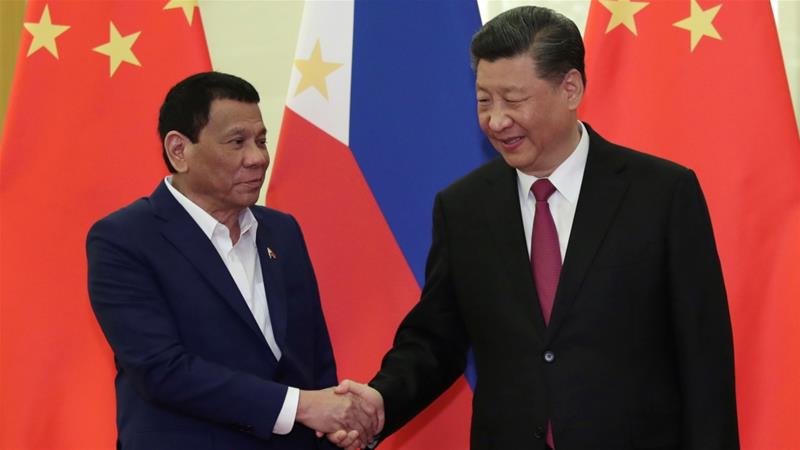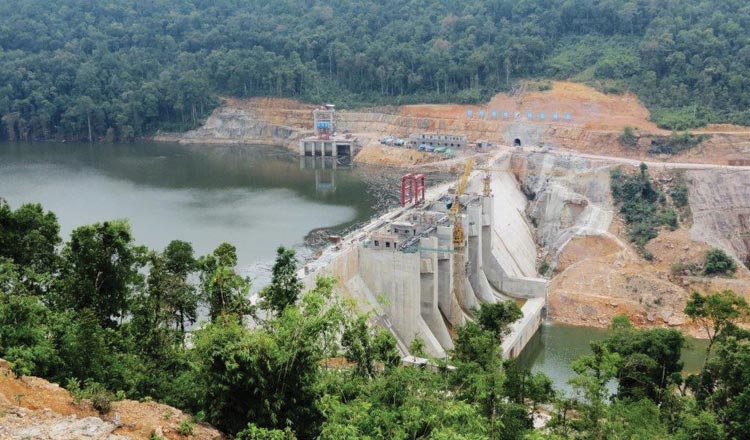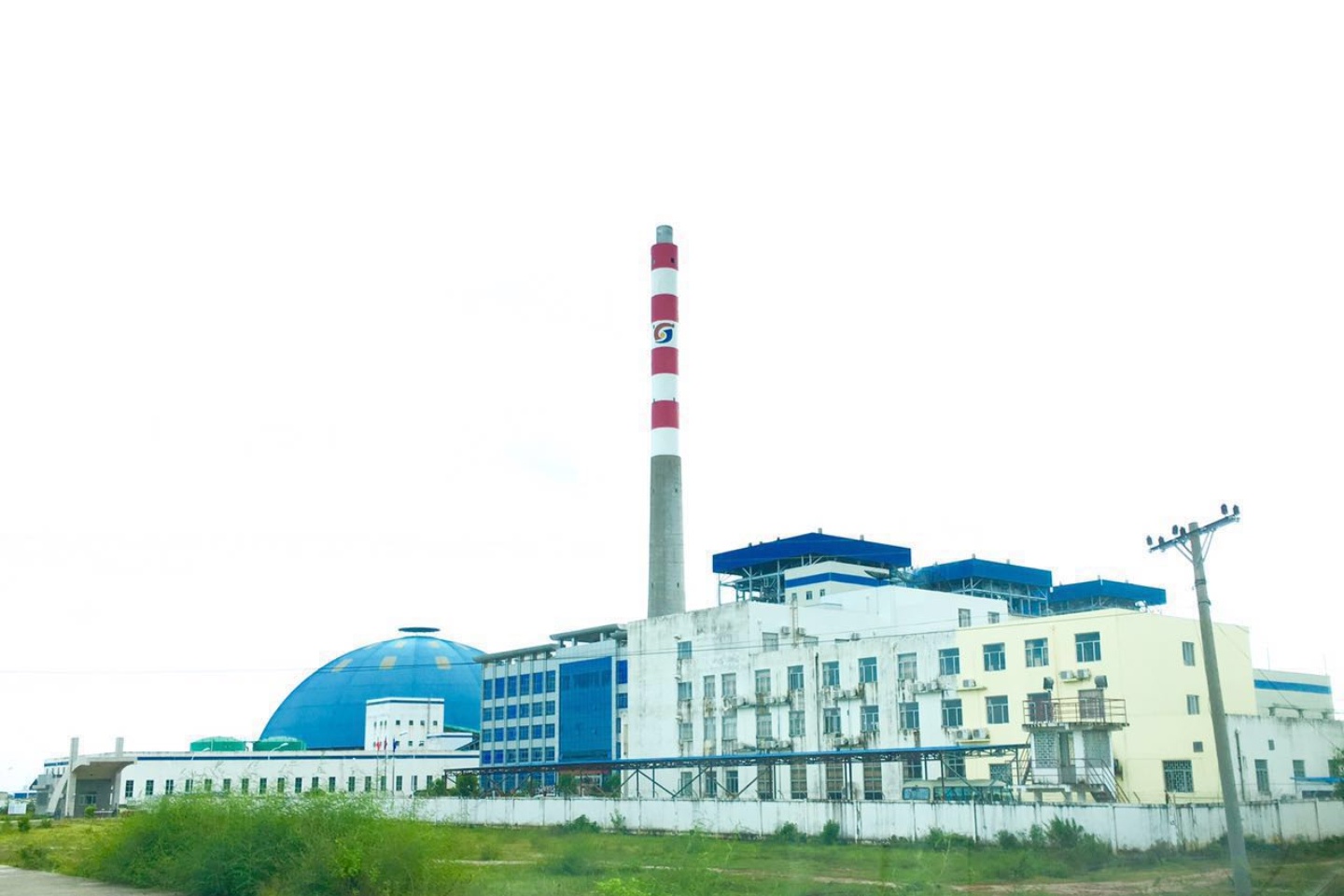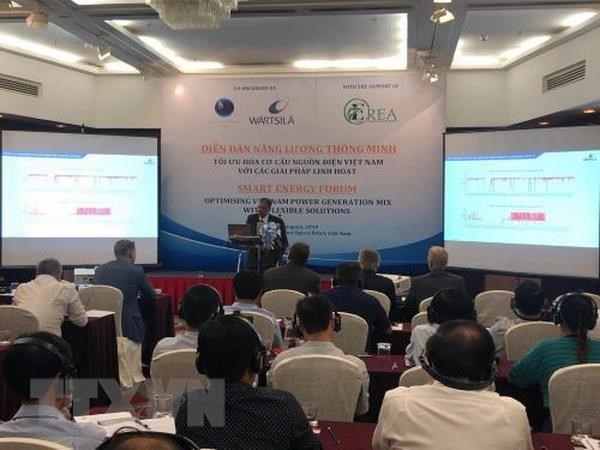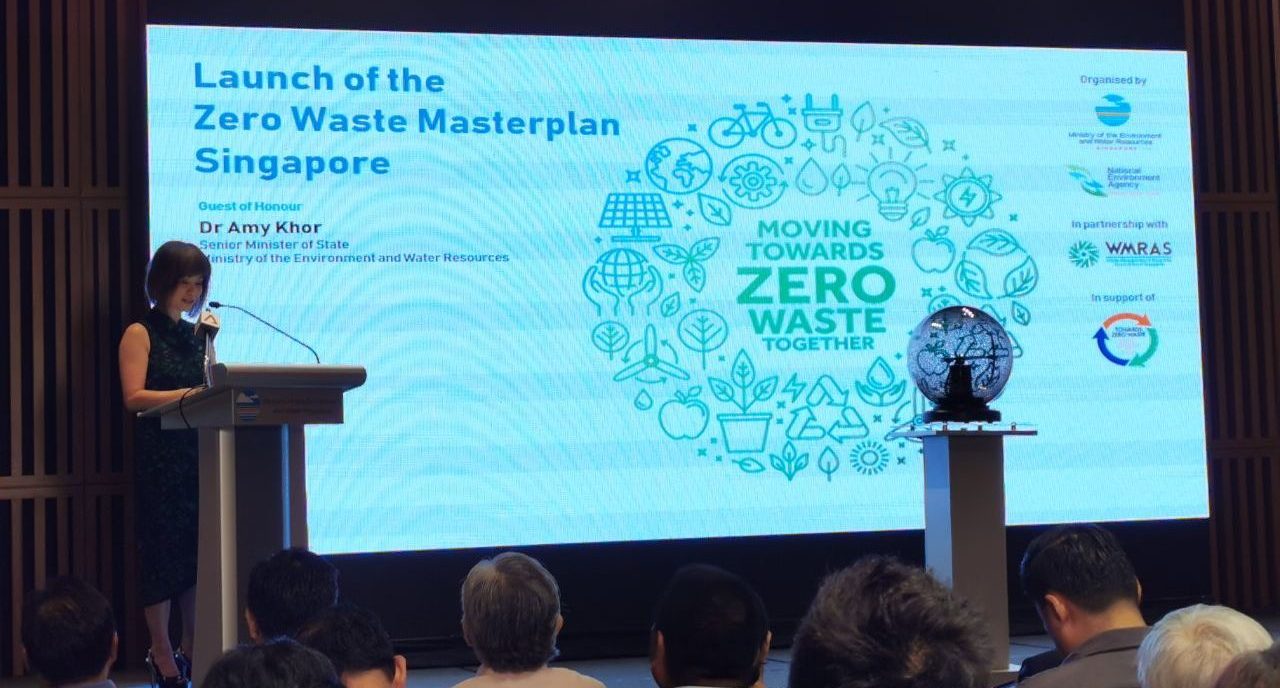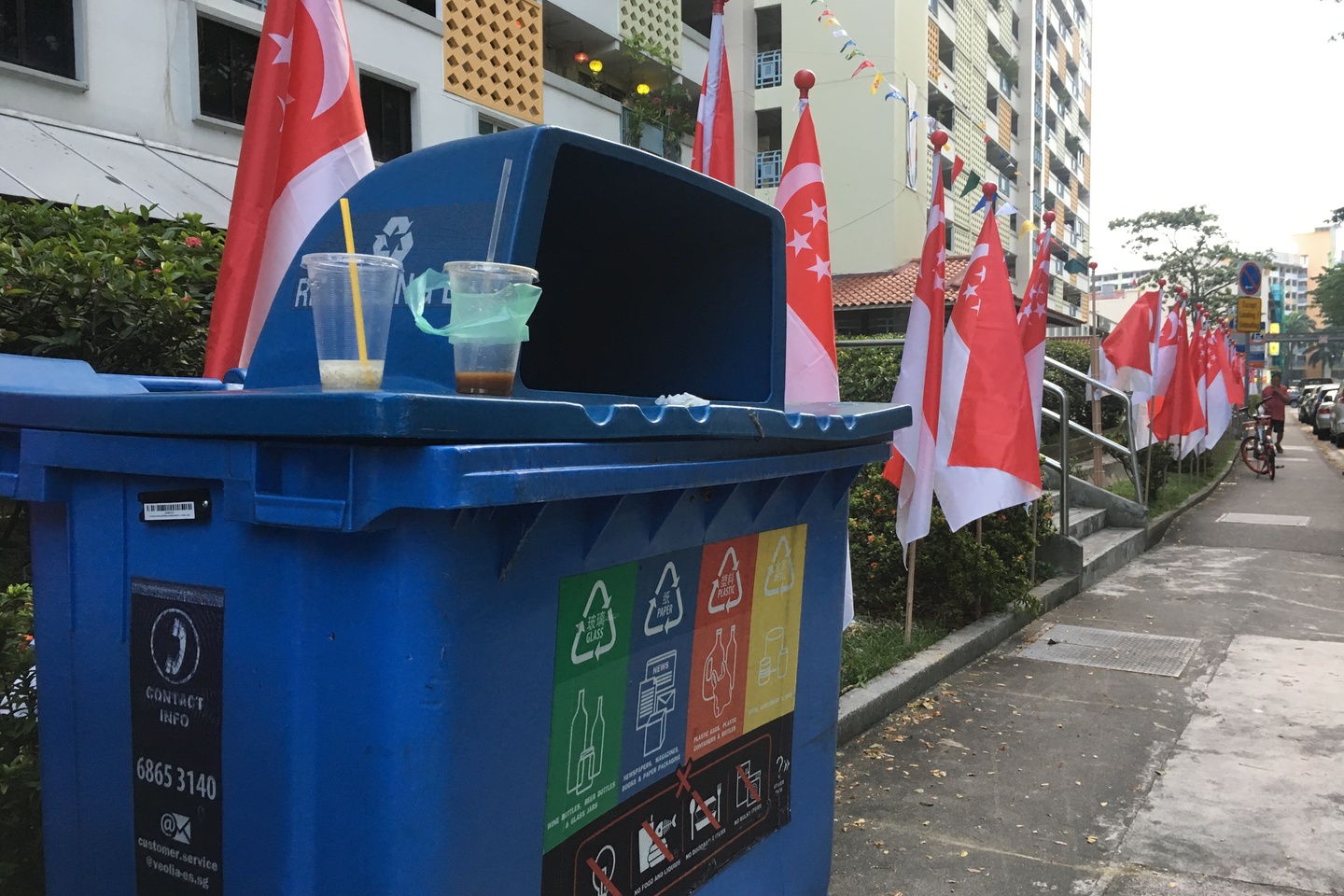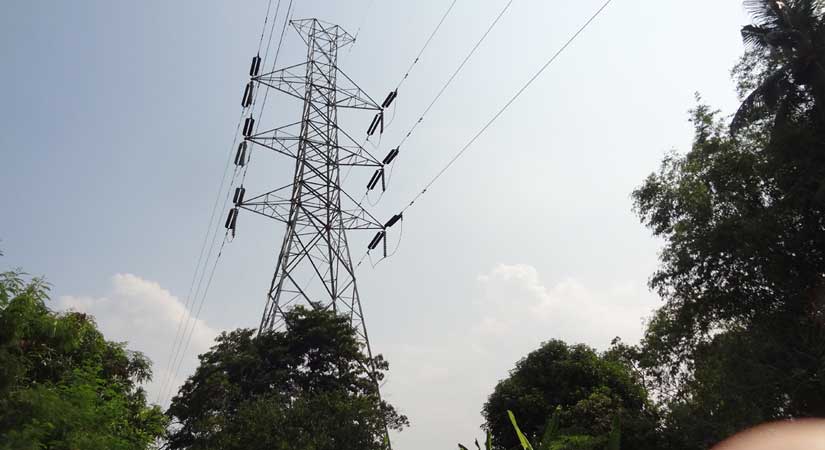In the seaside hills of Ou Treh, Cambodia, Peng Mom led the way to her house along a train track – the only access to her village, which is surrounded by a thicket of palms and vines. Inside, soot coated her cooking pots and furniture. Holding up a kitchen chair, the mother of four explained that the dust on it had settled in just one day, dulling the plastic’s hue to grey.
Directly across the tracks from her house lay the source: a cavernous warehouse where coal ash, a waste product from two nearby power plants, is stored and processed. The ash has led to a range of maladies in Peng Mom’s community. She and her neighbour, Phok Nge, said their children have had coughs, indigestion from food dirtied by the soot, and other health issues. “The ash makes my kids so itchy their skin almost breaks,” Phok Nge said with her children gathered around her.
Down the train tracks from their homes loom the candy-striped smokestacks of Cambodia’s first two coal plants, built to power sprawling new industrial parks and the casinos and hotels shooting up overnight in the neighbouring city of Sihanoukville. Catalysed by a massive influx of Chinese investment, Sihanoukville province is in the midst of an economic boom.
As Sihanoukville rises, Peng Mom and Phok Nge’s plight is set to worsen. A third coal plant is about to descend upon their neighbourhood.
It will be shipped over 1,600 kilometres from the Chinese province of Hunan.
There a retired coal plant is being meticulously deconstructed, like a prized sculpture preparing for a travelling exhibition. Forty five thousand tons of components are being labelled with individual QR codes to facilitate its reconstruction in Cambodia.
China’s shift to a greener economy – and a deadly pollution scandal – led to the Hunan plant’s closure; now it is getting a fresh start on foreign shores.
When it lands in Cambodia, the plant will exacerbate the pollution in Ou Treh and the global climate crisis. China has turned a blind eye to the side effects of coal power development as it encourages the renaissance of its coal industry overseas.
The government would do better to invest in solar power plants – they are better than coal power plants. We understand that no matter if you have an environmental impact report to prove that there will be no impact, the reality is always different from the report.
Sok Sokhom, director, Cambodian National Research Organization
A global threat
From a desert in Pakistan to the coast of Kenya, Chinese companies and banks have built, financed or supplied equipment to hundreds of coal power projects across the world over the last two decades.
The export of a used power plant from China is uncommon, according to Yuan Jiahai, a professor at the North China Electricity and Power University. However, the forces driving the Hunan plant to Cambodia are also behind the broader overseas migration of China’s coal industry.
The scientific consensus is that coal power needs to be phased out in order to prevent catastrophic climate change. “Building new coal plants without carbon capture and storage is incompatible with the energy transition required by the Paris Agreement, especially because each new coal plant built today will last 30 to 50 years,” said Kelly Gallagher, director of Tufts University’s Center for International Environment and Resource Policy.
Yet, while most developed countries have restricted state support for overseas coal projects, China has explicitly encouraged its state-owned banks and companies to pursue new markets. That support is not abating: Chinese companies and banks have committed to finance one quarter of the coal power capacity under development outside of China.
In an interview at last year’s UN climate conference, Li Junfeng, the former director of China’s National Centre for Climate Change Strategy and International Cooperation, said China’s construction of coal power plants overseas is critical to meeting rising power demand. “We cannot require a developing country less developed than China to start decreasing coal consumption now. That is not possible,” he said.
But coal-fuelled development is no longer the only path. Renewable energy is rapidly becoming cost-competitive, and studies have shown that every year coal power causes hundreds of thousands of premature deaths linked to air pollution in India and China.
A stranded coal plant
A key reason China continues to support coal power development overseas is because it is a solution to a domestic economic problem – one that has plagued Hunan.
Before receiving a one-way ticket to Cambodia, the Hunan Chuangyuan coal plant powered an aluminium smelter in the fertile hills of Changde, a major rice producing region on the banks of the Yuanjiang River. The aluminium factory was built in 2001, when China’s roaring economy had a seemingly bottomless appetite for raw materials – and coal power.
But in late 2014, a reporter from the Beijing News visited Pantang, a village next to the factory, and uncovered a wasteland where tangerine trees once blossomed. A toxic cocktail of fluoride from the aluminium smelter and coal ash had been illegally dumped in the valley. Tangerines irrigated by the polluted groundwater had shrivelled and developed tumours, foreshadowing an outbreak of cancer that killed at least 10 villagers.
Following the exposé, the Hunan Environmental Protection Bureau took immediate action, fining the company operating the coal and aluminium plant 100,000 yuan (US$14,530) and ordering it to rectify its behaviour. The case also prompted the bureau to launch a broader environmental campaign for the whole province. One of its top priorities was to shut down outmoded, law-violating factories.
This idea did not originate in Hunan but was established as a key national policy by the State Council in 2013. China had entered a period of slower economic growth which the government has dubbed “the new normal”. Bloated from years of runaway development, aluminium, steel, coal and other heavy industries found themselves with far more capacity than the market could absorb. In response, the State Council ordered the provinces to close down unneeded production lines.
Factories that did not meet energy consumption and pollution standards were to be prioritised in the culling. This advanced the twin goals of combating the national pollution crisis and restoring the fiscal health of China’s heavy industries.
The Hunan Chuangyuan factory was a natural target for the campaign. Following record low aluminium prices, it shut down aluminium and power production in early 2016. At the end of the year, the Hunan government reported that the plant had made permanent cuts to its aluminium production capacity in line with the national policy.
This left the factory’s coal power plant stranded.
The plant’s prospects in China were dim. By 2020, inefficient coal plants like the Chuangyuan, which emit higher levels of carbon dioxide and air pollutants, have to undergo costly retrofits or shut down, according to a government energy efficiency policy.
Meanwhile, the government was sending a clear message to industries struggling domestically: look overseas. In a 2013 overcapacity policy, the State Council explicitly directed these industries to “go out” to new markets as a solution. Another directive focused on coal and iron overcapacity called on China’s state-owned banks to provide financial support for the industries to go abroad.
‘From trash to treasure’
As the Chuangyuan factory and scores like it were being shut down across China, a new wave of industrialisation was happening in Cambodia. With it arose a path to a second life for the coal plant marooned in Hunan.
Transaction records from last year show that the two Chuangyuan coal power units were sold for 218 million yuan ($21.7 million) by a company specialising in used power plant equipment. The unlikely bidder was Kasen Zhejiang, a Chinese furniture manufacturer that supplies La-Z-Boy and other international brands.
Earlier in 2018, Kasen Zhejiang’s parent company Kasen International formed a joint venture with a Cambodian real estate mogul to develop the Steung Hav special economic zone modelled after Shenzhen along the lush coast of Sihanoukville. Once a sleepy beach town, the city has become the landing point for a flood of Chinese investment; 70 per cent of Cambodia’s foreign direct investment now comes from China.
Driving into Sihanoukville at night, one has the feeling of arriving in a third-tier Chinese city trying to recreate Las Vegas – in Cambodia. Even the roads cannot keep pace with construction. The skeletons of new hotels and casinos stand orphaned in monsoon mud waiting to be connected to the city grid. Undeterred, overloaded trucks weave through mountains of construction waste and groups of revellers.
The development spree was bolstered by Xi Jinping’s state visit to Cambodia in 2016 and the countries’ growing relationship under the Belt and Road Initiative. Cambodia had the sixth highest GDP growth rate in the world in 2018, and opportunities abound for Chinese investors. Chinese state capital has flowed into constructing power lines and highways. Private investors have also arrived in droves to make fortunes under the banner of the Belt and Road.
The gold rush is hitting fever pitch, and Kasen Zhejiang is staking its claim. Dubbed a Belt and Road project by Cambodia, its special economic zone is planned to attract major industries, from iron smelters to its own paper-making business.
But in a country plagued by rolling blackouts, the factories will need a stable power source. So building a power plant was Kasen’s first priority. The two Hunan-sourced power units will be the first in a 1200-megawatt coal power plant that they expect to have online by 2020. Kasen did not respond to requests for comment, but the discounted price of a second-hand coal plant likely made the Hunan Chuangyuan an attractive choice.
Kasen’s publicly listed parent company has pledged to reduce the group’s greenhouse gas emissions, but China does not apply its domestic environmental standards to Chinese coal plants shipped or constructed overseas. Meanwhile Cambodia, like many other developing countries, does not block the development of inefficient coal plants.
“Low technology, such as sub-critical technology, is relatively cheaper in terms of capital cost, and, thus, Cambodia may opt for low technology,” states the Cambodian government’s Basic Energy Plan, published in 2019. The plan acknowledges that this could lead to acid rain, higher emissions and health impacts for residents living near the plants.
According to China Electric Equipment Group Northwest, the state-owned contractor for the Chuangyuan plant’s transfer and reconstruction, this asymmetry amounts to a win-win. “The project is a practical measure to implement the national overcapacity policy and it is also a response to the national ‘Belt and Road’ strategy. The two decommissioned units of the Chuangyuan coal plant will be transformed from trash to treasure,” the company wrote on its website.
A treasure for Cambodia?
Sihanoukville residents have suffered from Cambodia’s blackouts and high electricity prices, but coal power development has still faced opposition.
Before the first two coal plants were built, local campaigners organised a protest march during Sihanoukville’s “Sea Festival”. The Cambodian government responded by setting up a forum for company representatives to address complaints in the capital city of Phnom Penh, according to Cheap Sotheary, coordinator for the Cambodian Human Rights and Development Association (ADHOC), who was involved in the protest.
The representatives pledged to control pollution and provide healthcare to the surrounding communities – promises Cheap said have not been kept. Villagers were largely unaware of the adverse health effects of the plants, which they were told would bring cheaper electricity and jobs, she added.
“We tried to campaign against the construction, but it was not successful, so the construction continued.”
Since the coal plants were built, electricity access has improved, and electricity rates are lower. But locals are also bearing the hidden costs of coal power.
The coal ash snowing down on Peng Mom’s village has had the most pronounced effect. Not only Peng Mom and Phok Nge’s families, but nearly all the villagers in Ou Treh have experienced health issues, mirroring the wave of sickness that coal and other industrial waste brought to the community in Hunan a few years ago.
The ash, which is removed from the coal plants in the process of generating power to reduce air pollution, contains heavy metals and needs to be handled and stored carefully. But in Sihanoukville, it is being trucked to the processing plant next to the village and refined into a product for cement-making, a growing business in the midst of Cambodia’s real estate boom.
The volume of coal ash will likely increase, as the cast-off Hunan Chuangyuan plant is installed in Sihanoukville, and the two existing coal plants complete expansions.
Peng Mom and Phok Nge have been working with their neighbours and village chief to petition higher levels of government to have the coal-ash processing plant shut down and moved away from residential areas.
After gathering thumbprints for a petition, 42 families in the community formally filed a complaint in early June. They got the attention of the provincial governor, who inspected the site and threatened to close the plant if it does not clean up its operations in the next few months.
They will continue fighting their battle against the side effects of coal power, but the root issue is not going away. “The government will not stop the coal power plants. They only have plans to build more,” Cheap said.
Sok Sokhom, director of the Cambodian National Research Organization, said: “The government would do better to invest in solar power plants – they are better than coal power plants. We understand that no matter if you have an environmental impact report to prove that there will be no impact, the reality is always different from the report.”
Cambodia does not have large domestic coal resources, so it has to import coal. Meanwhile, it has strong solar potential and new solar installations are already cheaper than coal in many ASEAN countries.
Cambodia has just built its first solar plants. But with finance for coal power, and now physical coal equipment, pouring into Sihanoukville from China and other countries, coal remains attractive to the government and to businesses willing to overlook local impacts in pursuit of short-term growth and profits.
Will the plant’s journey be replicated?
The state-owned engineering company behind the Chuangyuan project sees its transfer as a model. “This project is innovative. It provides a new path for other financially struggling power plants and enterprises decreasing capacity domestically to follow,” it wrote on its website.
Other industries facing overcapacity in China have also started to see the potential to export their old equipment to new markets. Recently, China’s top steelmaker began planning to export two shuttered blast furnaces from Xinjiang to Cambodia.
In the coal power industry, such used equipment transfers will likely remain rare. Most of China’s inefficient plants will be retrofitted, according to Professor Yuan Jiahai. However, the heightened environmental standards and changing economic conditions that are sending the Chuangyuan plant overseas will continue to drive a broader migration of China’s coal industry abroad.
By lending state support for new coal projects, China is tipping the scale toward continued coal development rather than renewable energy. In ASEAN countries, the destination of the majority of these projects, no more than 8 per cent of electricity generation can come from coal power by 2030 to meet the climate change mitigation targets set by the Paris Agreement. That means the majority of existing coal plants will have to be phased out rapidly; any additional plants will only push that target further out of reach.
Some environmental officials in the Chinese government are calling for a new approach. Xie Zhenhua, China’s special representative on climate change, told a press conference last November: “We will… avoid or minimise the ‘pollute first, clean up later’ industrialisation path in Belt and Road projects. We made this mistake and it cost us. We do not want the same circumstances to also arise in Belt and Road countries.”
But for now, the same coal plant is travelling from the end of one industrial revolution in China to the beginning of another in Cambodia.
Along the train tracks in Ou Treh, the country’s economic take-off is measured in the daily accumulation of coal ash. Sitting at her open-air kitchen table in the shadow of the processing plant, Peng Mom said: “We are poor, so we do not have any choice to move. We only have this place to live in.”


